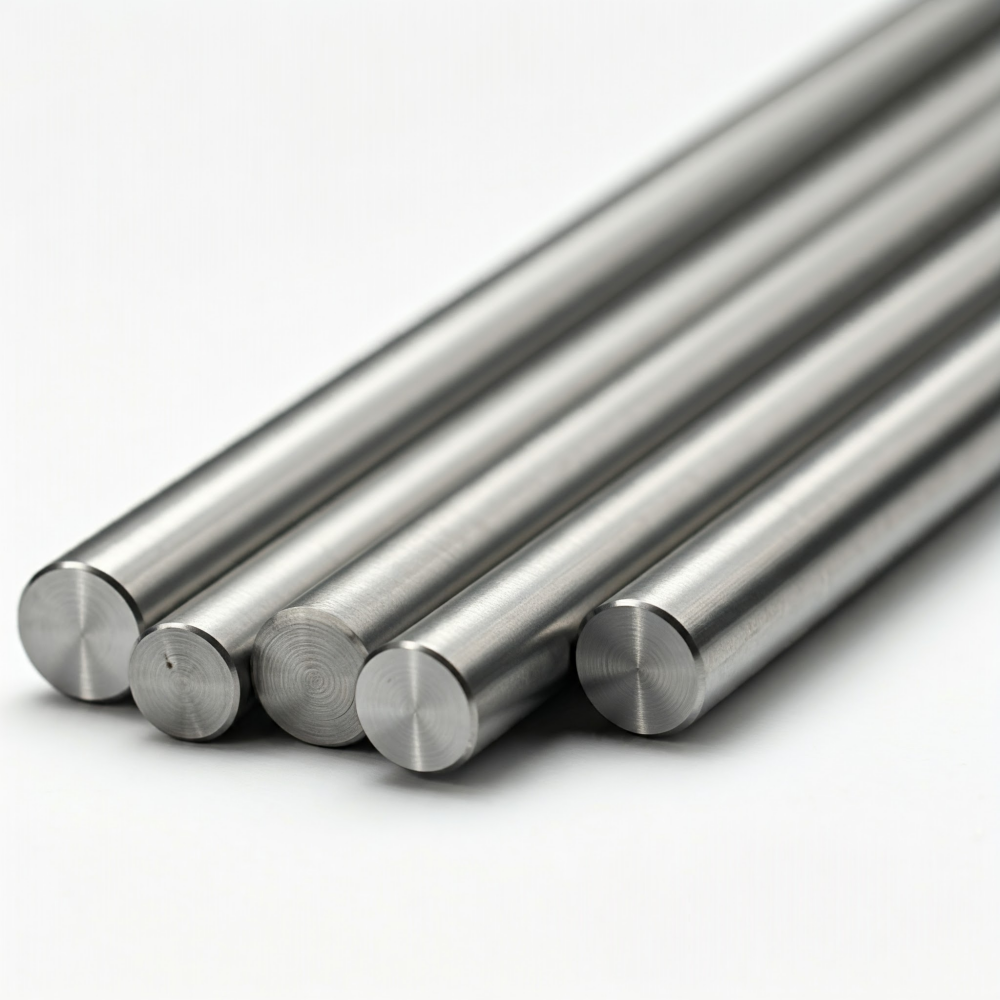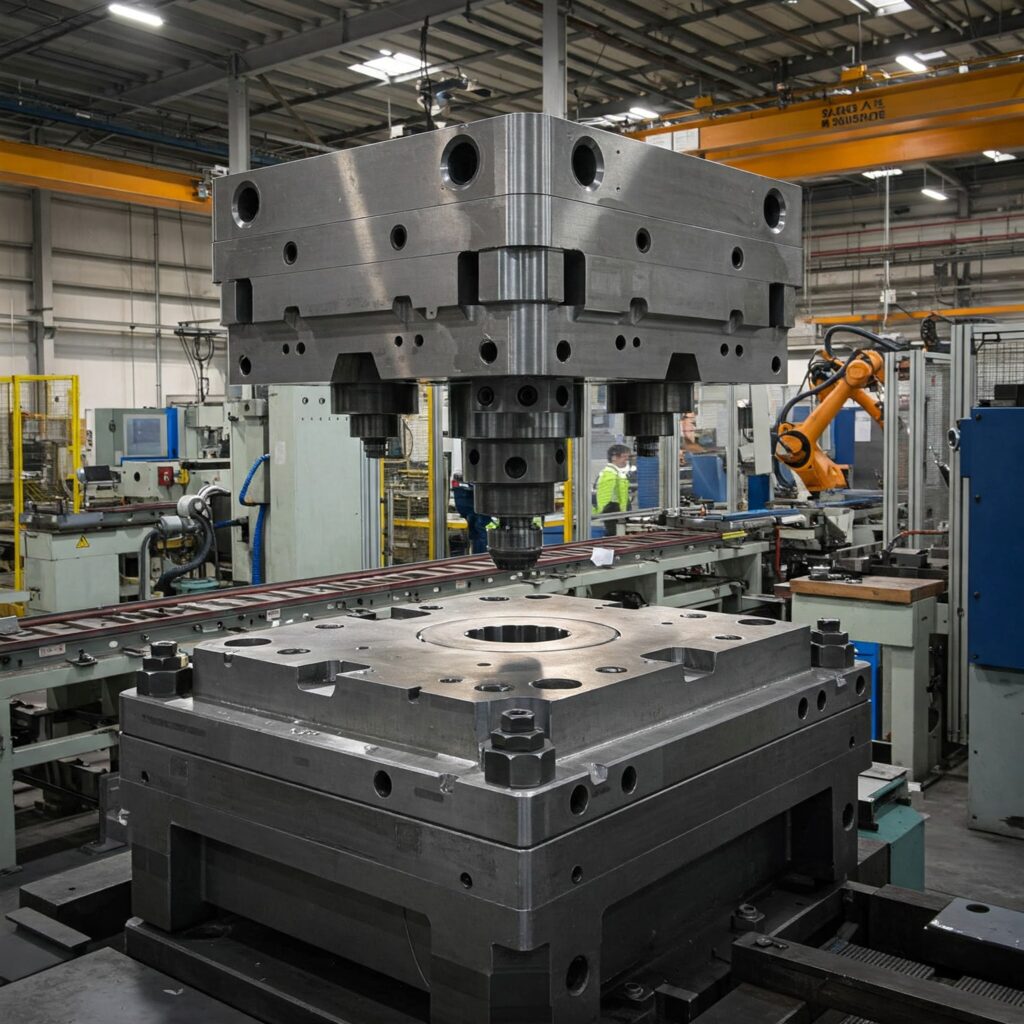Stal P20 jest AISI Stal formowa o średniej zawartości stopu (typu Amerykańskiego Instytutu Żelaza i Stali). Jest powszechnie dostarczana w stanie wstępnie utwardzonym, o twardości od około 28 do 40 HRC, czyli około 300 HB, i jest również znana z normy DIN 1.2311. Główne zastosowania to formy do tworzyw sztucznych, matryce do odlewów cynkowych oraz bloki mocujące. Niniejszy artykuł koncentruje się na twardości stali P20.
1. Dlaczego twardość jest kluczowa dla stali P20
W zastosowaniu stali P20 w formach i tłocznikach, twardość jest bardzo ważną właściwością. Znajduje ona odzwierciedlenie przede wszystkim w następujących aspektach:
- Odporność na odkształcenia i zużycie: Odpowiednia twardość pozwala stali wytrzymać wysokie obciążenia i ciśnienia występujące podczas formowania, zapobiegając odkształceniom plastycznym. W przypadku obróbki tworzyw ściernych odpowiednia twardość zapewnia niezbędną odporność na zużycie, wydłużając żywotność narzędzia.
- Obróbka skrawaniem: P20 jest zazwyczaj dostarczany w stanie utwardzonym, który zapewnia równowagę między twardością ułatwiającą zastosowanie a łatwością obróbki skrawaniem, umożliwiając tworzenie skomplikowanych gniazd form bez dodatkowej obróbki cieplnej w wysokiej temperaturze.
- Polerowalność: Wysoka twardość powierzchni, którą można zwiększyć poprzez nawęglanie, jest niezbędna do uzyskania gładkich, krytycznych wykończeń wymaganych w przypadku przezroczystych form do tworzyw sztucznych.

2. Czynniki wpływające na twardość stali P20
2.1 Skład chemiczny
Skład stali P20 to
| Węgiel (C) | Mangan (Mn) | Krzem (Si) | Chrom (Cr) | Molibden (Mo) | Fosfor (P) | Siarka (S) |
| 0,28 – 0,40 | 0,60 – 1,00 | 0,20 – 0,80 | 1,40 – 2,00 | 0,30 – 0,55 | ≤ 0.030 | ≤ 0.030 |
P20 to stal narzędziowa niskostopowa, której skład chemiczny ma kluczowe znaczenie dla jej właściwości. Kluczowe składniki stopowe i ich wpływ na twardość i właściwości:
- Węgiel (C): 0,28–0,40%. Wpływa na twardość i wytrzymałość.
- Chrom (Cr): 1,40–2,00%. Zwiększa odporność na zużycie i korozję. Obecność chromu zwiększa wytrzymałość i twardość.
- Molibden (Mo): 0,30–0,55%. Poprawia strukturę ziarna, poprawiając wytrzymałość i spawalność.
- Mangan (Mn): 0,60–1,00%. Wspomaga odtlenianie, zwiększa wytrzymałość na rozciąganie, nie powodując kruchości.
- Krzem (Si): 0,20–0,80%. Wspomaga odtlenianie, zwiększa wytrzymałość na rozciąganie, nie powodując kruchości.
- Fosfor (P) i siarka (S): ≤ 0,03% (maks.). Niewielkie ilości wpływają na ogólną wydajność. Po dodaniu odpowiedniej ilości pierwiastka S, P20S stal ma lepsze właściwości przetwórcze.
- Nikiel (Ni): Po dodaniu stopu Ni, stal jest ulepszona P20Ni (1,2738) może znacząco poprawić wytrzymałość i ciągliwość, co sprzyja przetwórstwu.
2.2 Procesy obróbki cieplnej
Materiał P20 można hartować w oleju, a następnie odpuszczać w celu uzyskania określonego poziomu twardości odpowiedniego do różnych zastosowań.
Twardość stali P20 po hartowaniu i ruszenie1
| Temperatura hartowania | Twardość Rockwella C |
| Jak ugasić | 51 |
| 400°F / 205°C | 49 |
| 600°F / 315°C | 47 |
| 800°F / 425°C | 44 |
| 1000°F / 540°C | 39 |
| 1100°F / 595°C | 33 |
| 1200°F / 650°C | 26 |
| 1250°F / 675°C | 21 |
- Temperatura podgrzewania: 1200°F / 650°C (Jeśli jest stosowany do większych części masowych.)
- Temperatura utwardzania: 1525°F / 830°C
- Metoda hartowania: hartowanie w oleju i nawęglanie
- CHEMIA: Węgiel 0,30%, Mangan 0,75%, Krzem 0,50%, Chrom 1,65%, Molibden 0,40%
2.3 Stan nawęglany i utwardzony
Stal P20 można nawęglania, a następnie Stal P20 hartowana Aby zwiększyć twardość powierzchni i odporność na zużycie. Po nawęglaniu i hartowaniu, twardość powierzchni stali P20 może osiągnąć 65 HRC. Twardość rdzenia po nawęglaniu wynosi zazwyczaj około 45 HRC.
Temperatura nawęglania wpływa na uzyskaną twardość powierzchni. Na przykład próbki nawęglane w temperaturze 845°C (1550°F) osiągnęły twardość powierzchniową 65,6 HRC, podczas gdy próbki nawęglane w temperaturze 980°C (1800°F) osiągnęły twardość 58,6 HRC.
Odpuszczanie nawęglonej stali P20 powoduje zmniejszenie jej twardości powierzchniowej, a jej odporność na zmiękczenie podczas odpuszczania jest uważana za stosunkowo niską, porównywalną do zwykłej stali węglowej.
2.4 Azotowanie i tuftriding
Azotowanie i tufftriding (rodzaj azotonawęglania ferrytycznego) znacząco zwiększają twardość powierzchni stali P20, głównie poprzez tworzenie twardych azotków i strefy dyfuzyjnej.
Azotowanie w temperaturze 525°C w amoniaku może skutkować twardością powierzchni wynoszącą około 650 HV.
Tufftriding w temperaturze 570°C pozwala uzyskać twardość powierzchni wynoszącą około 700 HV i twardą warstwę powierzchniową o grubości około 0,1 mm po dwóch godzinach obróbki.
Azotowanie zwiększa również odporność na korozję.
3. Właściwości mechaniczne (powiązane z twardością)
- Wytrzymałość na rozciąganie (maksymalna). Stal P20 po hartowaniu olejowym z temperatury 845 °C (1550 °F) i odpuszczaniu przez 2 godziny w temperaturze 205 °C (400 °F) ma wytrzymałość na rozciąganie 1310 MPa (190 ksi).
- Granica plastyczności. W tych samych warunkach obróbki cieplnej, jak powyżej, ma granicę plastyczności 1172 MPa (170 ksi).
- Wydłużenie przy zerwaniu. Po hartowaniu i odpuszczaniu w oleju wydłużenie wynosi 50 mm (2 cale). 13%.
- Wytrzymałość na uderzenia (Charpy V-Notch). W tych samych warunkach obróbki cieplnej, jak powyżej, ma energię uderzenia Charpy'ego z karbem V wynoszącą 43 J (32 stopy·funty siły).
- Wytrzymałość na ściskanie. W przybliżeniu równa wytrzymałości na rozciąganie.
- Moduł sprężystości. 190-210 GPa lub 30 x 10^6 psi (207 GPa).
- Gęstość. 7855,1 kg/m3 (7,855 g/cm3).
- Przewodność cieplna. 24 Btu/ft/hr/°F (41,5 W/m/°K) lub 34,0 W/(mK). Ważne dla odprowadzania ciepła podczas obróbki i formowania.
- Współczynnik Poissona. 0.27-0.30
- Współczynnik rozszerzalności cieplnej. 12,8 x 10^-6/°C (20-425°C).
4. Skrawalność i wykończenie powierzchni stali P20 (zależność od twardości)
Stal P20 charakteryzuje się doskonałą skrawalnością w zakresie 60-65% stali węglowej 1% lub 65% w porównaniu z wzorcową stalą narzędziową węglową 1% (oznaczenie 100). Wstępnie utwardzona stal P20 może być obrabiana bezpośrednio bez dodatkowej obróbki cieplnej, ale ciepło generowane podczas obróbki może powodować utwardzanie zgniotowe i niedokładność wymiarową. Rozwiązania obejmują:
- Aby zmniejszyć ilość ciepła, należy stosować niskie prędkości skrawania i wysokie posuwy.
- Stosuj narzędzia pokryte materiałami takimi jak azotek tytanu (TiN).
- Skutecznie stosuj środki chłodzące w celu rozproszenia ciepła i smarowania.
- Bryson, WE (2007). Obróbka cieplna, dobór i zastosowanie stali narzędziowych (s. 195). Publikacje Hansera. ↩︎
Szukasz stali narzędziowej P20 o wysokiej wydajności?
Współpracuj z Aobo Steel, Twoimi zaufanymi ekspertami z ponad 20-letnim doświadczeniem w kuciu doskonałych stali narzędziowych. Dostarczamy najwyższej jakości rozwiązania P20, precyzyjnie dostosowane do Twoich potrzeb produkcyjnych i zwiększenia wydajności operacyjnej.
Niezależnie od tego, czy potrzebujesz standardowego P20, czy też specyfikacji niestandardowej, nasi specjaliści są gotowi pomóc Ci w doborze materiałów i przedstawić konkurencyjną, niezobowiązującą wycenę.
Gotowy, aby zacząć? Wypełnij poniższy formularz, aby się z nami skontaktować!


